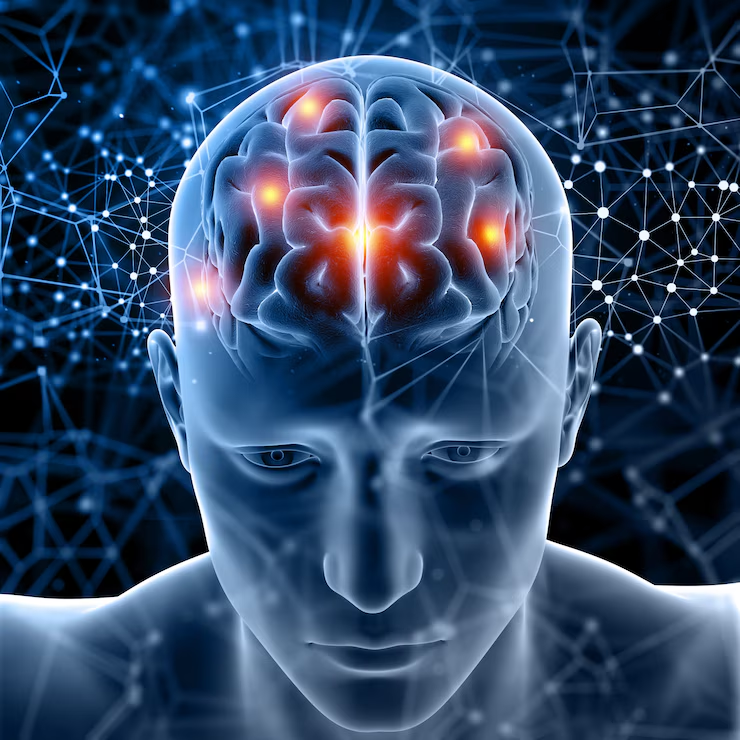Table of Contents
What Is Brain Death?
- Brain death is a profound and irreversible condition where the brain completely ceases to function due to catastrophic damage. Unlike other states of unconsciousness or comas, brain death represents the permanent loss of all brain activity, including the brainstem, which regulates essential functions such as breathing and heart rate.
- When this happens, the body can no longer sustain itself, even with medical support like ventilators. For this reason, brain death is legally recognized as death in most parts of the world.

Causes of Brain Death: What Leads to This Devastating Condition?
- Our brain is the command center of our body, requiring a continuous supply of oxygen and blood to function. When this supply is interrupted or significant trauma occurs, it can result in brain death. Common causes include:
Traumatic Brain Injuries: Severe accidents or falls.
- Strokes: Both ischemic (lack of blood flow) and hemorrhagic (brain bleeds).
- Infections: Conditions like meningitis or encephalitis.
- Heart Attacks: Leading to oxygen deprivation in the brain.
- Hypoxic-Ischemic Brain Injury: Caused by extended periods without oxygen.
Each of these conditions can cause irreversible damage, leaving the brain unable to recover.
The Process of Diagnosing Brain Death
- Diagnosing brain death is a meticulous process, grounded in strict medical guidelines. It ensures there’s no doubt about the diagnosis before informing families. Here’s how it’s done:
Step 1: Rule Out Reversible Conditions
- Doctors first identify and treat any underlying issues that could mimic brain death, such as medication effects or severe metabolic imbalances.
Step 2: Perform Neurological Examinations
These tests are designed to assess the brain’s functionality. Specialists check for:
- Eye Reflexes: Do pupils react to light?
- Gag Reflex: Does the throat respond to stimulation?
- Response to Touch: Any purposeful movement?
Step 3: Conduct Imaging Tests
- Advanced imaging like an MRI can reveal the extent of brain damage and confirm the absence of activity.
Step 4: Apnea Test
- Since the brain controls breathing, an apnea test temporarily removes ventilator support to see if the patient attempts to breathe independently. The absence of spontaneous breathing confirms brain death.
What Happens After a Brain Death Diagnosis?
- Receiving a diagnosis of brain death is an emotionally shattering moment for families. Healthcare providers ensure the news is communicated with compassion and clarity, allowing loved ones to ask questions and process the gravity of the situation.
Next Steps
Once brain death is confirmed:
- Ventilator Removal: Since the brain no longer supports breathing, ventilators are eventually turned off.
- Family Time: Families are encouraged to spend moments with their loved one before life support is withdrawn.
In some cases, families may also consider organ donation, a decision that can offer hope and life to others amidst their grief.
Is Brain Death Common?
- Despite its devastating impact, brain death is relatively rare, accounting for only about 2% of hospital deaths in adults in the United States. However, it remains a critical topic in medical ethics, organ donation, and end-of-life care discussions.
Final Thoughts: A Sobering Reality
- Brain death forces us to confront the fragility of life and the profound role our brains play in defining it. Understanding this condition can help families make informed decisions during some of the most challenging moments of their lives.
- While rare, brain death underscores the importance of compassion, communication, and clarity in navigating the delicate boundaries between life and death.

Additional Common Questions About Brain Death
What’s the Difference Between a Coma and Brain Death?
A coma and brain death may seem similar at first glance because both involve a loss of consciousness. However, they are vastly different in nature and outcome:
Coma: A person in a coma is unconscious but retains some basic reflexes. For example, they might blink, move slightly, or react to bright light. Importantly, comas are not always permanent; many people wake up within a few days or weeks, depending on the underlying cause.
Brain Death: In contrast, brain death means the complete and irreversible loss of all brain activity, including reflexes. There’s no possibility of recovery because the damage is permanent.
Understanding this distinction is crucial for families making decisions during a medical crisis.
Does Anyone Ever Recover from Brain Death?
The short answer is no. Brain death is a final and irreversible condition. When healthcare providers diagnose brain death, they follow rigorous medical protocols to ensure there’s no ambiguity. Once this diagnosis is made, the individual is considered clinically and legally dead.
Unlike comas or other states of reduced consciousness, brain death leaves no possibility for recovery because the brain’s essential functions are permanently lost.
Can Brain Death Be Prevented?
In most cases, brain death cannot be entirely prevented, as it often results from unexpected events like severe injuries or sudden illnesses. However, taking certain precautions can reduce the risk of conditions that may lead to brain death:
Seek Immediate Medical Attention: Quick action during strokes, heart attacks, or traumatic injuries can minimize damage.
Follow Preventative Health Practices: Managing chronic conditions like high blood pressure or diabetes can reduce the risk of strokes and other brain-related complications.
Wear Safety Gear: Helmets and seat belts can prevent traumatic brain injuries in accidents.
Planning Ahead: Preparing for the Unexpected
While brain death itself cannot be reversed, you can take proactive steps to prepare for potential medical crises. Creating an advance directive is one of the most effective ways to ensure your wishes are respected if you become unable to speak for yourself.
What Is an Advance Directive?
An advance directive is a legal document outlining your preferences for medical care in critical situations. It allows you to:
Specify whether you want life-support measures like ventilators.
Indicate your desire to donate organs, including after brain death.
Appoint someone you trust to make medical decisions on your behalf.
Having an advance directive can provide clarity and comfort to your loved ones, ensuring they honor your wishes during a difficult time.
Final Thoughts:
Understanding brain death and its implications can help families make informed and compassionate decisions during emotionally challenging moments. While its occurrence is often sudden and irreversible, proactive planning through legal measures like advance directives can empower individuals to leave a legacy of clarity, dignity, and, in some cases, life through organ donation.


